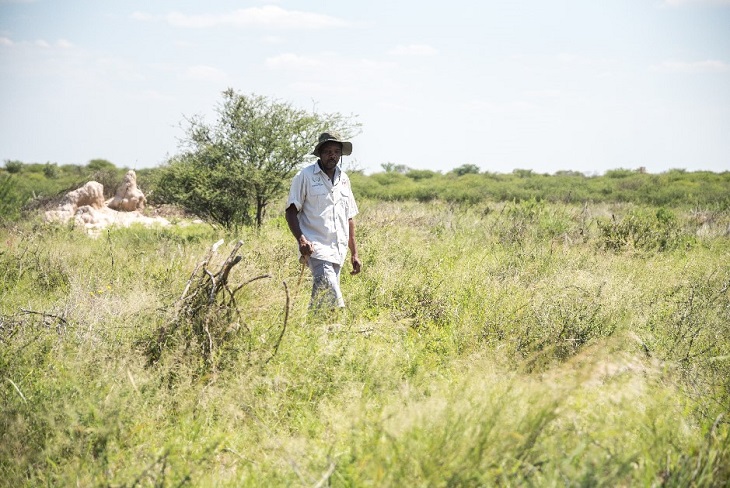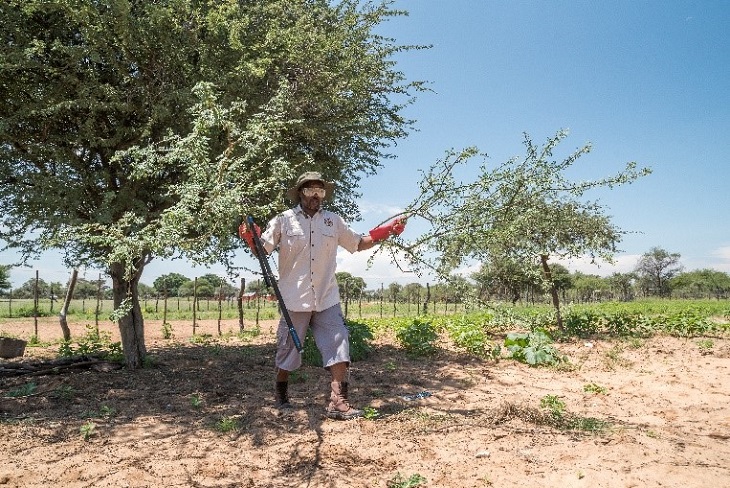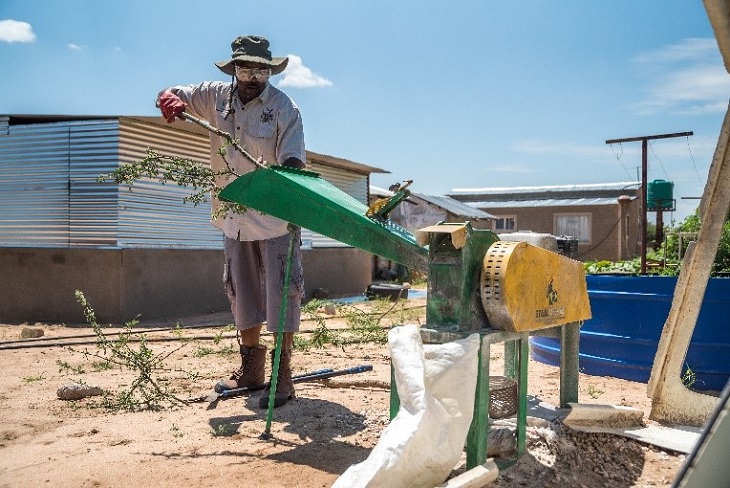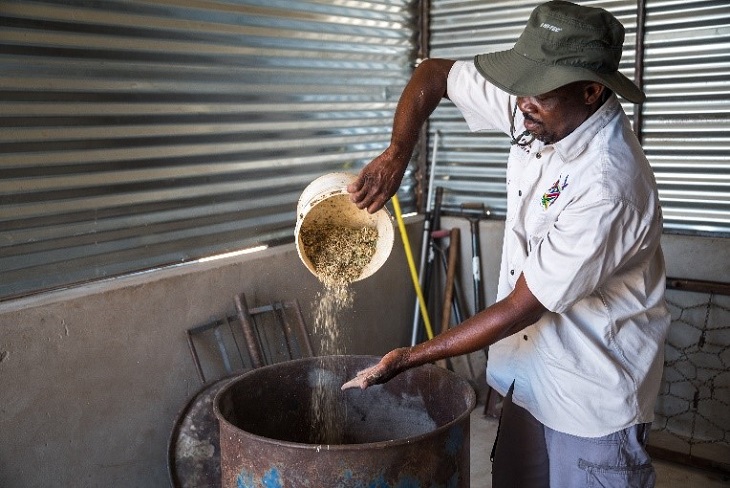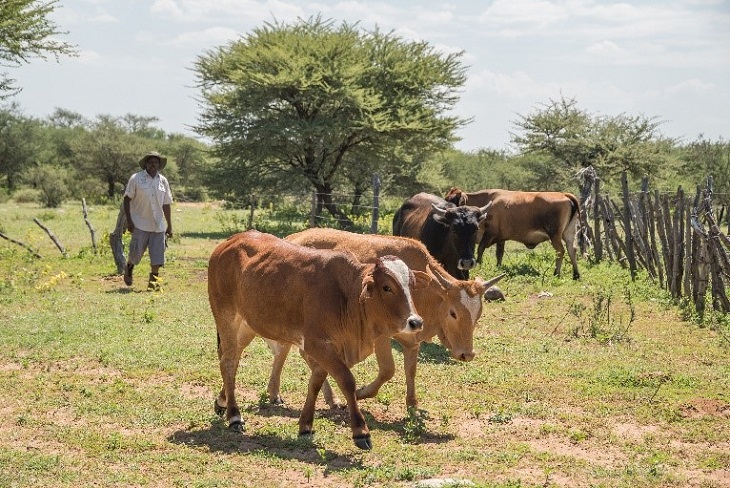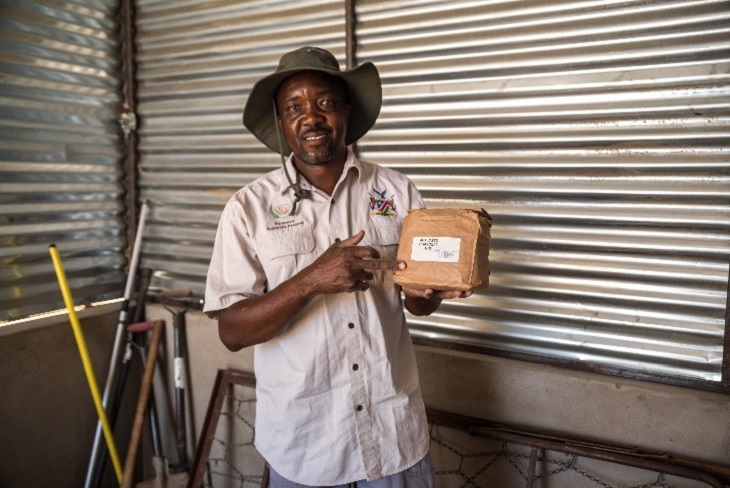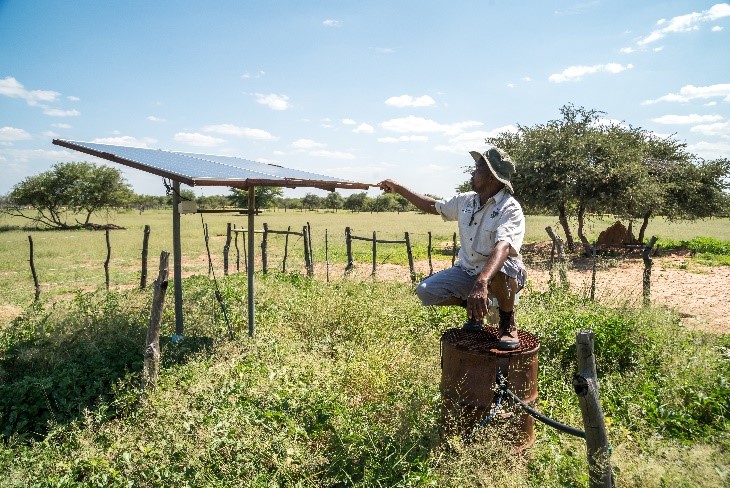Salomo Kauari, Farmer in Namibia
Salomo Kauari, like his father and grandfather before him, is a full-time farmer. His family are communal farmers in the thornveld savanna of the Otjozondjupa Region of Namibia. After his father passed away, Salomo took over operations on the farm and applied the new skills he had acquired through training. Salomo had attended various forums hosted by the Bush Control and Biomass Utilisation Project implemented by GIZ in Namibia, which is where he first heard about bush-to-feed as a tool for maintaining animals in times of drought. The project is implemented on behalf of the German Federal Ministry for Economic Cooperation and Development (BMZ).
Bush-to-feed is a method of harvesting encroacher or invasive bush species, that get finely milled and mixed with supplements to make animal feed. Using this technique, Salomo kept his livestock alive during Namibia’s recent nine-year drought. His approach has earned him the respect of his peers, and he now acts as a mentor to other farmers. His expansions include inventing a barrel mixer that efficiently mixes his feed with little effort and at zero cost, and the manufacturing of activated charcoal which he sells to neighbouring farmers, as a treatment for animals against poisonous plants found in this area.
Do you feel that farming has changed?
Climate change has affected everything and has also changed everything. When I grew up, my father didn’t even use most of the supplements we currently use. As human population increases, land becomes scarcer and more people tend to settle in the grazing areas making them smaller, because there are a lot of camps around. Everything is fenced, so I must plan how to my livestock can survive in a small space, which means I have to supplement. Farming is very different in our time.
What innovative practices did you use to survive the recent drought in Namibia?
We have had low rainfall for many years now, but in 2019 we only had 130mm, less than a third of the previous average, so I knew I had to adjust. I used the bushes. I used a mixture of bush feed, maize bran, molasses syrup and salt. This was how my twelve calves survived the drought and they are big now. If it was not for animal feed or the ideas that I got from most of the trainings of using bush-to-feed, I could have lost everything.
How do you feel about your decision to apply these new methods?
It’s very rewarding for me. It was through knowledge forums, sharing ideas and learning from experts and other farmers that I became resilient to the changes in farming. Of course, there are always many challenges in farming, but the bush feed trainings by GIZ happened in the same period that we faced a severe drought in the country, and it helped me. It meant my cattle and livestock could survive the drought. This was all possible because I was able to use the bush biomass resource on my farm, thereby translating a problem into an opportunity.
What are your hopes for farming in the future?
I am very proud of where my farming operation is going. I have expanded my farming operations, I now have a warehouse, I have more livestock and I have diversified my livestock, because I now even have chickens and small vegetables. I am very happy, other farmers also approach me for advice. Every move I make feels like a step ahead.
